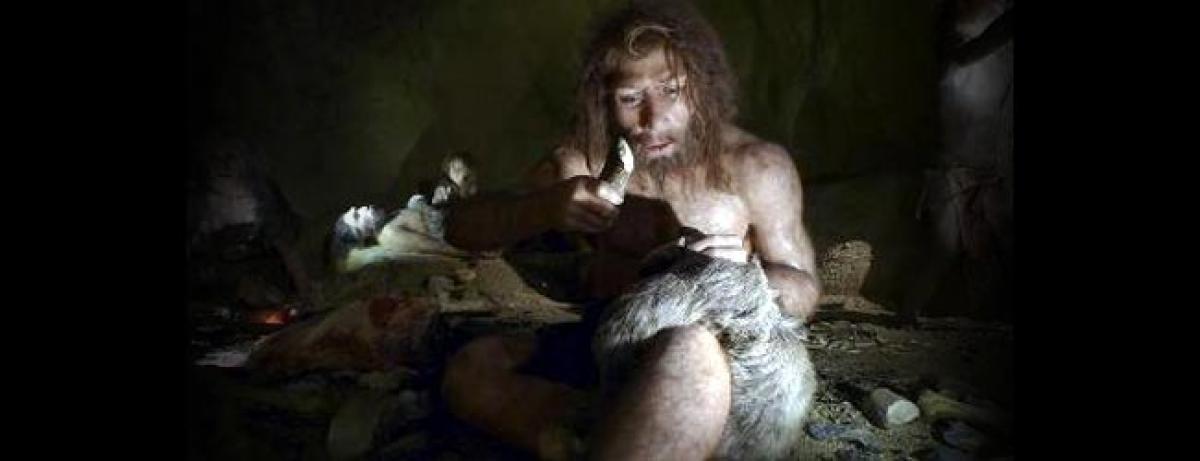Live
- Will end Naxalism in Chhattisgarh by March 2026: Amit Shah
- Will gift one project daily to people during Jan Kalyan Parv
- Mahakumbh & the Politics of Sanatan Nationalism
- A Soulful Celebration of Global Music
- Brahmin Community delegation felicitates CM Saini
- Allu Arjun Visits Chiranjeevi’s House for Lunch Meet
- Toyota organising TG Grameena Mahotsav
- Special rituals conducted at Maramma Temple
- Siddaramaiah has special love for Muslims: BJP
- We can’t afford spending less than 6% of GDP on healthcare
Just In

The Neanderthals genome contained harmful mutations that made them around 40 percent less reproductively fit than modern humans; and non-Africans inherited some of this genetic burden when they interbred with our extinct cousins, says a genetic research.
Washington D.C.: The Neanderthals genome contained harmful mutations that made them around 40 percent less reproductively fit than modern humans; and non-Africans inherited some of this genetic burden when they interbred with our extinct cousins, says a genetic research.
The results suggest that these harmful gene variants continue to reduce the fitness of some populations today. The study also has implications for management of endangered species.
Previous studies of DNA extracted from Neanderthal remains revealed that these Eurasian hominids were much more inbred and less genetically diverse than modern humans.
For thousands of years, the Neanderthal population size remained small, and mating among close relatives seems to have been common.
Then, 50,000-100,000 years ago, groups of anatomically modern humans left Africa and moved to the homelands of their distant Neanderthal cousins. The two groups interbred, mingling their previously distinct genomes.
But though a small fraction of the genome of non-African populations today is Neanderthal, their genetic contribution is uneven. Neanderthal sequences are concentrated in certain parts of the human genome, but missing from other regions.
"Whenever geneticists find a non-random arrangement like that, we look for the evolutionary forces that caused it," said study leader Kelley Harris.
Harris and her colleague hypothesised that the force in question was natural selection. In small populations, like the Neanderthals', natural selection is less effective and chance has an outsized influence.
This allows weakly harmful mutations to persist, rather than being weeded out over the generations. But once such mutations are introduced back into a larger population, such as modern humans, they would be exposed to the surveillance of natural selection and eventually lost.
The results suggest that Neanderthals carried many mutations with mild, but harmful effects. The combined effect of these weak mutations would have made Neanderthals at least 40% less fit than humans in evolutionary terms, that is, they were 40% less likely to reproduce and pass on their genes to the next generation.
Harris and Nielsen's simulations also suggest that humans and Neanderthals mixed much more freely than originally thought. Today, Neanderthal sequences make up approximately 2% of the genome in people from non-African populations.
The results also have implications for conserving endangered species. Many vulnerable populations in fragmented habitats face similar genetic problems to the Neanderthals: inbreeding, low genetic diversity, and accumulation of harmful mutations.
This study has been published in journal GENETICS.

© 2024 Hyderabad Media House Limited/The Hans India. All rights reserved. Powered by hocalwire.com







